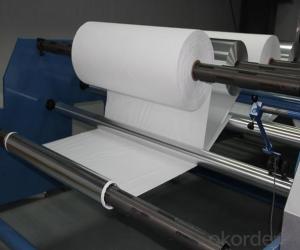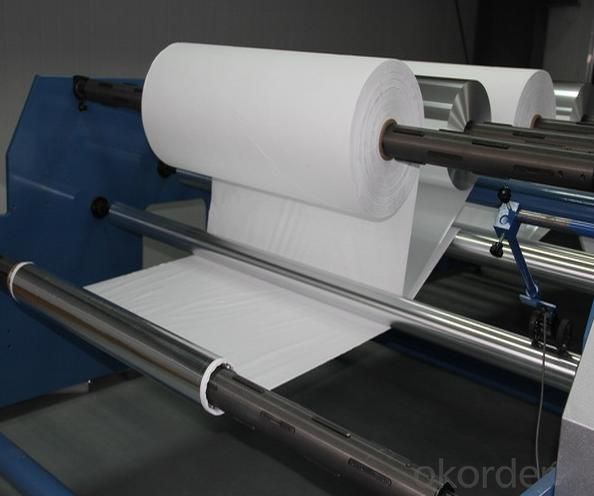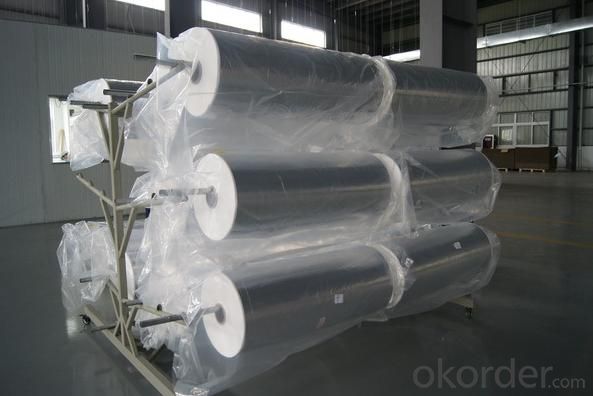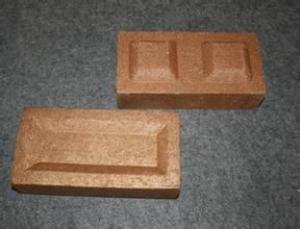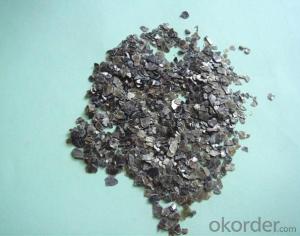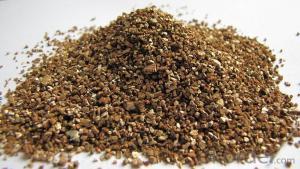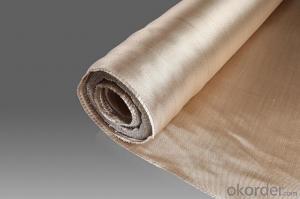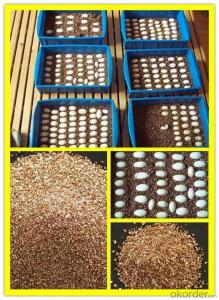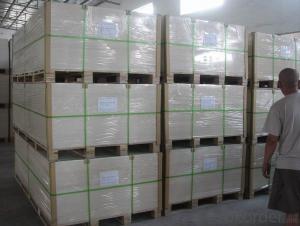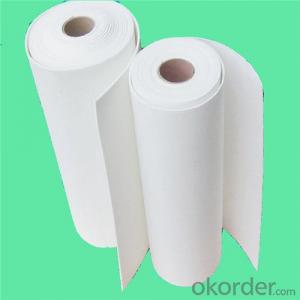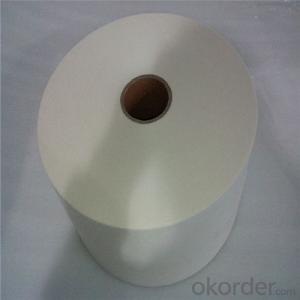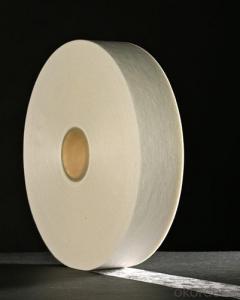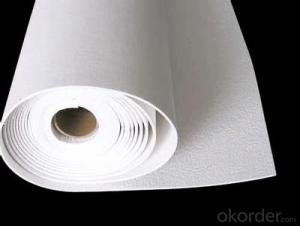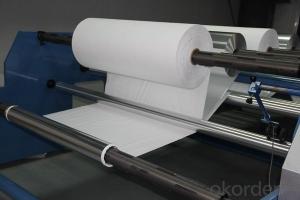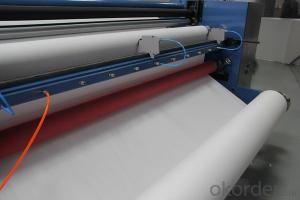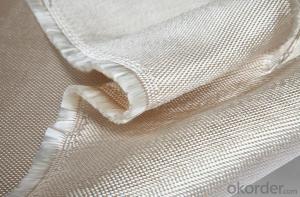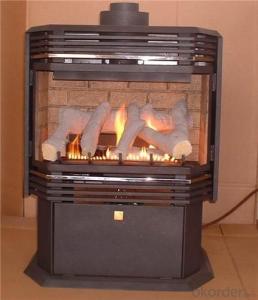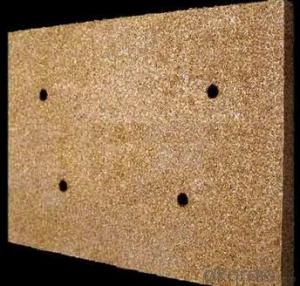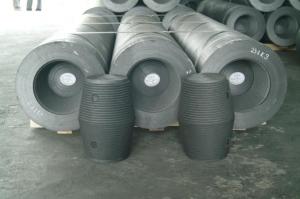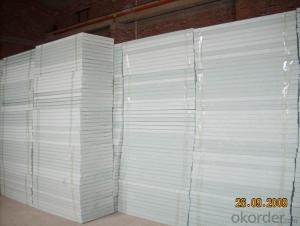Cryogenic Insulation Paper with Good Quality
- Loading Port:
- Tianjin
- Payment Terms:
- TT OR LC
- Min Order Qty:
- 1000 m²
- Supply Capability:
- 200000 m²/month
OKorder Service Pledge
OKorder Financial Service
You Might Also Like
1. Description of Cryogenic Insulation Paper:
The fire retardation glass fiber Cryogenic & Insulation paper is made of superfine glass fiber with special processing. This is usually used with aluminium foil and used for transport containers which store liquid helium, liquid hydrogen, liquid nitrogen,LNG etc.
The superfine glass fiber Cryogenic & Insulation paper's diameter between 0.1-0.6μm and fiber glass filament (diameter between 3-5 μm). According to a certain proportion, the paper is produced under the wet & vacuum forming process to make the paper have the space lattice structure. All the glass fiber is inorganic material, so it has outstanding flame retardant properties. Specifically engineered for use at big temperature range (approaching -273℃—500℃) and also the paper is really stable in the low temperature condition.
2. Specification of Cryogenic Insulation Paper:
The main way of heat conduction is by radiation heat exchange in the low and vacuum condition. In order to reduce the radiation heat exchange to meet the good heat insulation effect, by using aluminum foil for reflecting screen and superfine glass fiber insulation paper for spacer, then the multilayer combination of aluminum foil reflective screen and cryogenic & insulation material can build up the efficient thermal barrier against heat transfer in insulated vacuum storage containers. This material can be freely winding, and help the user to reduce the waste of manpower and material waste.
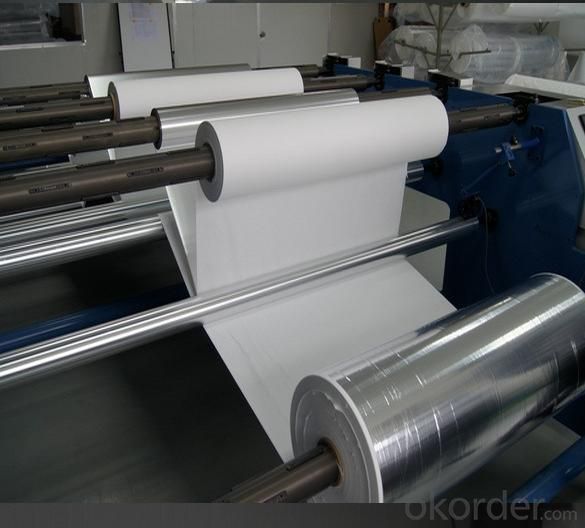
3. Application of Cryogenic Insulation Paper:
Cryogenic insulation paper(P paper/Z paper)/aluminum foil(or aluminized polyester film) compositions are laminated of Cryogenic insulation paper and aluminum foil(or aluminized polyester film).These products can be wrapped to the cryogenic inner tank directly and no need to composite by user.Therefore,it can effectively reduce the waste of material and hugely increases efficiency. The width varies from 40mm to 1800mm.
4. Technical Data of Cryogenic Insulation Paper:

- Q: my female leo just layed her 3rd clutch of eggs, and soo far i have been un successful hatching any, they always end up caving in, get moldy, or dry out, they die before they get a chance.first, is it okay that the eggs are covered in a light layer of sand once i put them in vermiculite? or do they need to be cleaned? and second, i have the container, with the eggs 1 inch appart in vermiculite ( moist enough to pack a quot;snow ballquot;) and i was wondering what a sufficient amount of heat would be... can i leave them under a heat lamp of 100W? is that too hot? and do i have to continously keep them moist? how long will the vermiculite stay moist for before i need to moisten it again?HELP ima huge newb at this stuff and i really want to keep these ones alive this time!
- I can't help with the problems with incubation, however one thing I would say is that when they are born keep them under a UV lamp. The vet I go to says despite the fact they are nocturnal, in the wild they still get loads of light, just like we are exposed to the dark, therefore they need UV light. There are countless cases of geckos with metabolic bone disease simply because they haven't had the UV they need. The food needs to be sprinkled with calcium dust which can only be metabolised if UV is present. Use a small amount of this on the food, just rub them in it and it'll stick! For food, try very small crickets bought from a pet shop. Rule of the thumb is no bigger than the space between their eyes, but dont worry if they dont eat as soon as they are born. Personally, I would use a heat mat to keep them warm when born, just under the substrate. Keep them on kitchen roll.
- Q: I‘m going to try my hand at planting this spring, but I live in an apartment, so all of it must be done through a pot.I was wondering if any of you had any tips on what sort of soil to use for best results. Peat moss, top soil? As you can tell, I have absolutely no idea what I‘m doing. Any tips would be greatly appreciated. Thanks!
- Hi! The best choice for an indoor potted plant would be a good potting soil like Miracle Grow and make sure it has vermiculite and/or perlite. They are usually the little white things in the potting soil and they help hold in moisture so the soil doesn't dry out too soon. The biggest thing, though, is to make sure you follow the directions for your plant and make sure it gets the proper amount of sunlight and water. Many plants, especially tropicals, need to be kept moist, but not wet, and cannot be allowed to dry out between waterings. But back to the potting soil, I think Miracle Grow is best. Good luck with your green thumb!!
- Q: One of the plants say to place in a bag for eight weeks with 1tsp water and germination material. What is the germination material?
- There are a number of different types of germination materials. Germination material could be vermiculite, perlite, sand, a sterile seed starting mix, even water can be a growing medium for some seeds. If it's a carnivorous collection, you could use sphagnum peat, too. Didn't they provide you with a growing medium when you bought the collection?
- Q: I brought home a flf in a 5 pot about a month ago. It‘s in what I hope to be it‘s permanent spot and seems to be fine. I want to pot it up to a 6 pot.What type of packaged soil should I use?Any additional tips are very welcome.
- I've had mine so many years I can't remember. Probably more than twenty. I always used plain potting soil mixed with a tiny amount of sand and perlite. Add some broken pieces of clay pots or rock to the bottom of the new pot first to keep the drainage hole from clogging up. Mine got so big I had to take him out and plant him out in the front yard. He likes it out there but every year I have to find new ways of covering him up when it gets real cold outside. If it gets real cold where you live, move him away from any cold windows as they hate coldness and will freeze.
- Q: I just bought a house with a half dead lawn that requires lots of water. The soil here has lots of clay in it and as a result, doesn't hold water well and needs excessive watering to keep a lawn green. My neighbor lives on a hill and reseeded his whole yard only to have his back yard (uphill) die on him because all the water ran down hill. Question is, how would I use vermiculite, perlite, or anything else to help my lawn retain water? I have used Scott's turf builder in an attempt to spread the roots of the grass and my lawn looks 100% better, but it still needs lots of water :(
- havent heard of that before, what is it?
- Q: today is the day, 64 years ago.
- The best metal to block a magnetic field is steel.
- Q: What is the bulk density of asphalt vermiculite? Is it better to use asphalt, vermiculite or cement vermiculite when roofing?
- Asphalt expanded vermiculite products are made of expanded vermiculite and hot asphalt by mixing, pouring, molding and pressing.Asphalt expanded vermiculite products have light weight, heat preservation, heat insulation, sound absorption, hydrophobic and corrosion resistance. Can be used in cold storage projects, industrial pipelines, building roofing insulation materials. The bulk density of asphalt expanded vermiculite products is about 300 ~ 400kg/m3.
- Q: I have been using lizard litter for my beardies, it's sooo lightweight easy to clean! Buuut...,I recently realized that it has crushed walnut shells in it, which I am highly allergic to ;-( and I HATE using sand for (various reasons). I think Vermiculite is my best bet, but it's very salty I can only find it in 5# bags. If any good reptile luvr can help me, i'd be greatful.
- If you only need a small amount for potted plant, go to a nursery or places like Lowes have it sometimes. It may be easier to find a plant-specific mix. (ex.:cactus).If you need a large amount, for flower beds, check with local feed stores.
- Q: I have baby Palm Tree‘s that have been plucked from under a full grown one. They are between 5 - 9 inches. I have tryed potting them leaving them in water, but they always seem to die. Any body know how I can care for them ? ( California Palm Tree‘s) Thanx.
- I'd recommend that you plant them in something like perlite or vermiculite, as I germinate my palm seeds in this, and then mix this with standard potting soil. Vermiculite and perlite are sterile products that allow air to be absorbed, as well as absorbing water. If you just place your seedlings in water there is a risk that they will rot - what's really needed is for their roots to extend out into the planting medium, and thus help the shoot to grow upwards, as water and nourishment is transported upwards. See a local nursery etc to get some of this material if you don't have any. It's useful for other seeds and cuttings, as it really open up the soil, allowing more air to circulate and help root growth. If you manage to get hold of some fresh seeds you can wash them, remove any debris, soak in warm water for a day or so, and then place into something like a sealed food container, containing vermiculite etc, and keep them in a warm place. They should sprout within 3 or 4 weeks, and you can then pot them on - this should be a little easier than seedlings that are collected, and may suffer some root damage when they are moved. I grow tons of Palms from seed and this is invariably the method that I use. Overall, try to minimise any root damage. Hope this helps. Good luck! Rob
Send your message to us
Cryogenic Insulation Paper with Good Quality
- Loading Port:
- Tianjin
- Payment Terms:
- TT OR LC
- Min Order Qty:
- 1000 m²
- Supply Capability:
- 200000 m²/month
OKorder Service Pledge
OKorder Financial Service
Similar products
Hot products
Hot Searches
Related keywords
